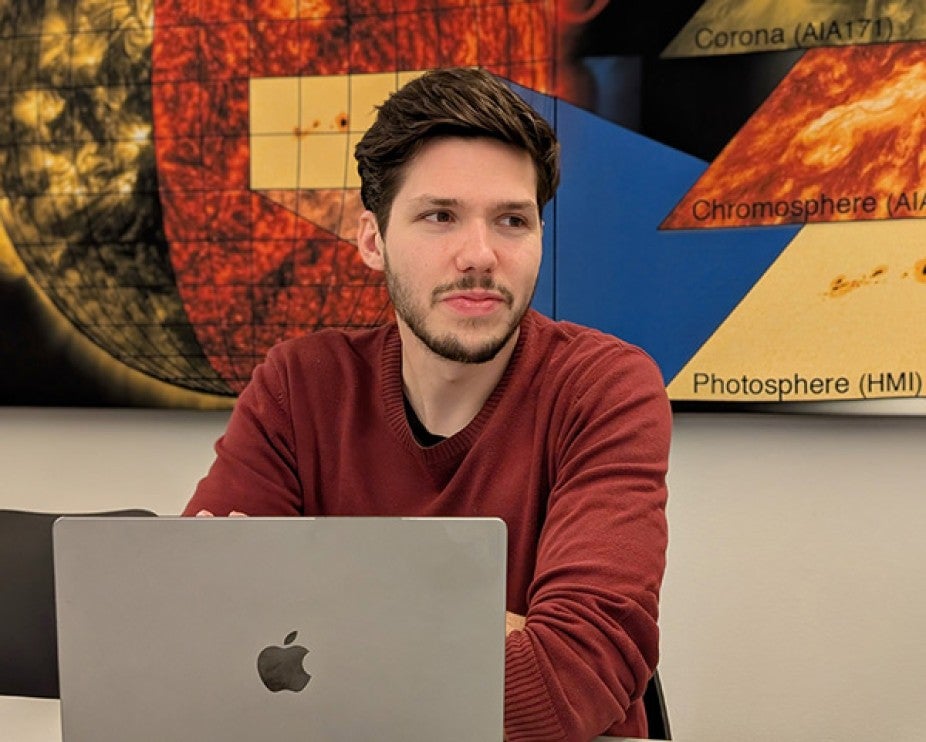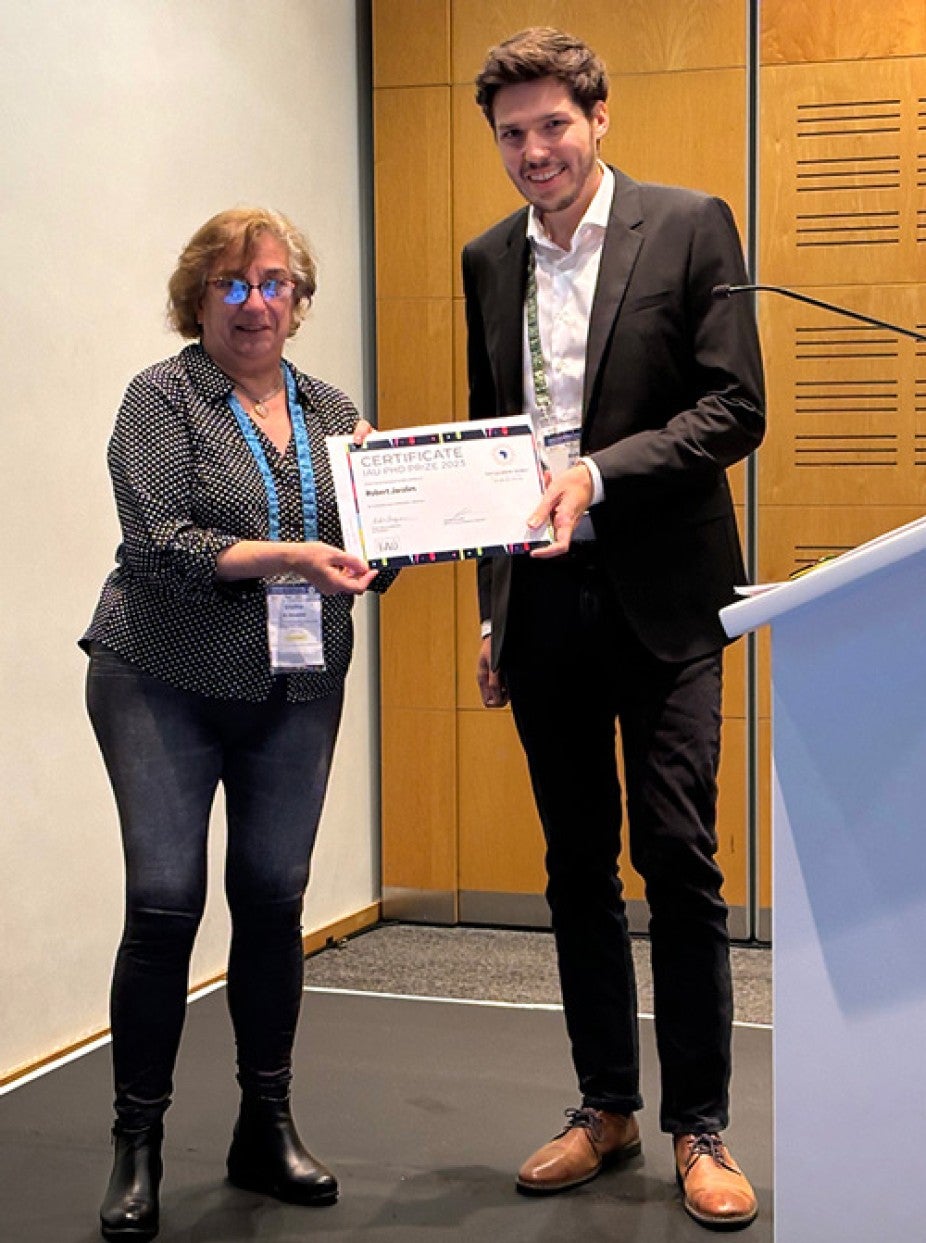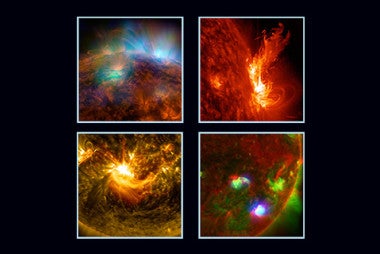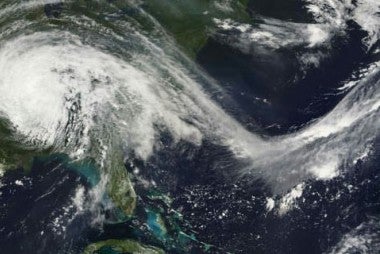NASA Jack Eddy Fellow devises method to model Sun’s magnetic field
Untangling the mysteries of the Sun and how solar activity influences space weather has long been the subject of scientific inquiry.
“The limitation that scientists face today,” says Robert Jarolim, “is that we observe the Sun’s magnetic field from the lowest layer, the photosphere or the surface of the Sun, but the dynamics that cause eruptions and flares happen in the upper solar atmosphere, the solar corona.”

Robert Jarolim, recipient of the NASA Jack Eddy Fellowship. Credit: Robert Jarolim.
Devising a way to learn more about the Sun’s magnetic field and the dynamic activity of the corona is the challenge that Jarolim has undertaken during his two-year, NASA Jack Eddy Fellowship at the NSF National Center for Atmospheric Research (NCAR) High Altitude Observatory (HAO). Established by NASA’s Living With a Star program and UCAR’s Cooperative Programs for the Advancement of Earth System Science (CPAESS), this prestigious post-doctoral fellowship is named after pioneering solar researcher John A. “Jack” Eddy. It is an opportunity for heliophysics researchers like Jarolim to study space weather and the connection between the Sun and Earth.
Lacking the direct observations necessary to study solar eruptions – how they build and explode – Jarolim created another way to model the Sun’s magnetic field. Leaning on his background in computer science and astrophysics, he looked to physics-informed neural networks (PINNs) as a way of blending physical properties or principles into a machine learning process.
“This is a new method that can integrate data and physical models into a data-driven simulation,” says Jarolim. Using existing datasets from the NASA Solar Observatory (SDO), a mission launched in 2010 to collect continuous measurements of the solar photosphere, Jarolim incorporated these data into his model.
The results, he says, “showed that with this method, we can achieve a new state-of-the-art in magnetic field modeling and for the first time, we can do it in real time. This is a big game changer because now we can apply this for permanent monitoring of the solar magnetic field.”

Robert Jarolim receiving the 2023 International Astronomical Union’s Ph.D. Prize for his thesis on studies of solar physics utilizing artificial intelligence (AI) and deep learning methods. Credit: Robert Jarolim
This type of routine monitoring will not only provide scientists a novel way to see activity on the Sun and learn more about its dynamics, but to potentially use that information to look to the future by creating forecasts of solar activity. Those forecasts may help scientists understand more about how solar storms impact space weather and Earth’s climate as well as their potential for triggering power outages and disruptions in communications systems.
“It’s a nice synergy,” says Jarolim. He and colleagues at HAO are excited about using his work as preparation for expanding the scope of modeling to include new observations from other instruments in order to create a more accurate picture of solar activity.
“We know that the magnetic field is central to understanding the Sun – how heating mechanisms operate in the solar atmosphere and how energy is transported and released in the upper atmosphere,” says Jarolim.
Jarolim is the recipient of the 2024 European Solar Physics Division Prize awarded for his outstanding thesis on studies of solar physics utilizing artificial intelligence (AI) and deep learning methods. He was awarded the 2023 International Astronomical Union’s Ph.D. Prize, also for his thesis. He completed his undergraduate and graduate studies at the University of Graz in Graz, Austria.









